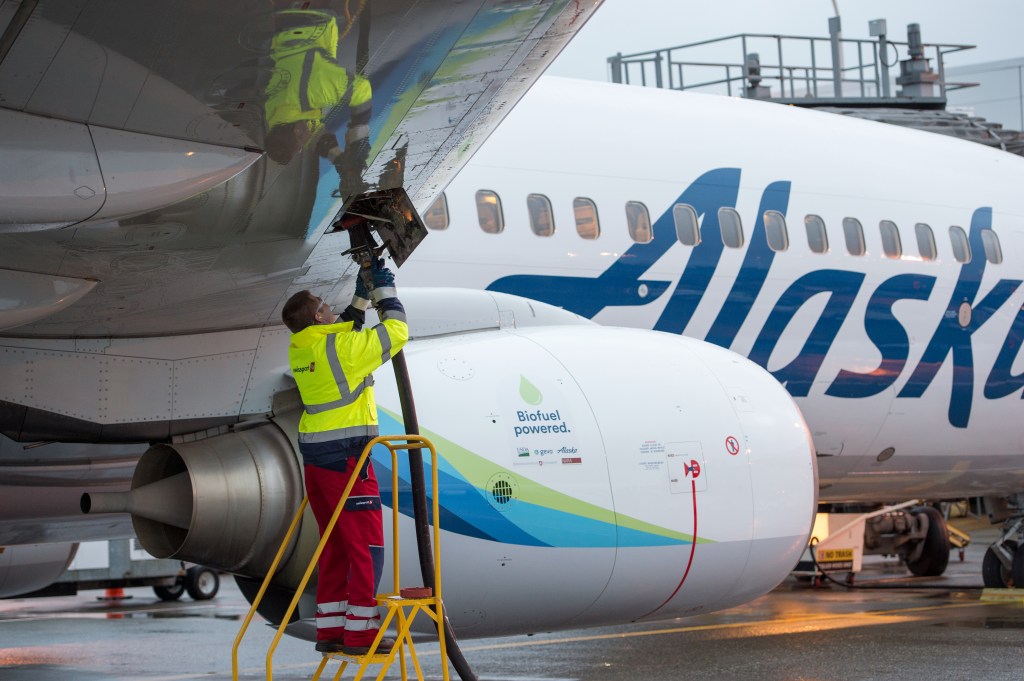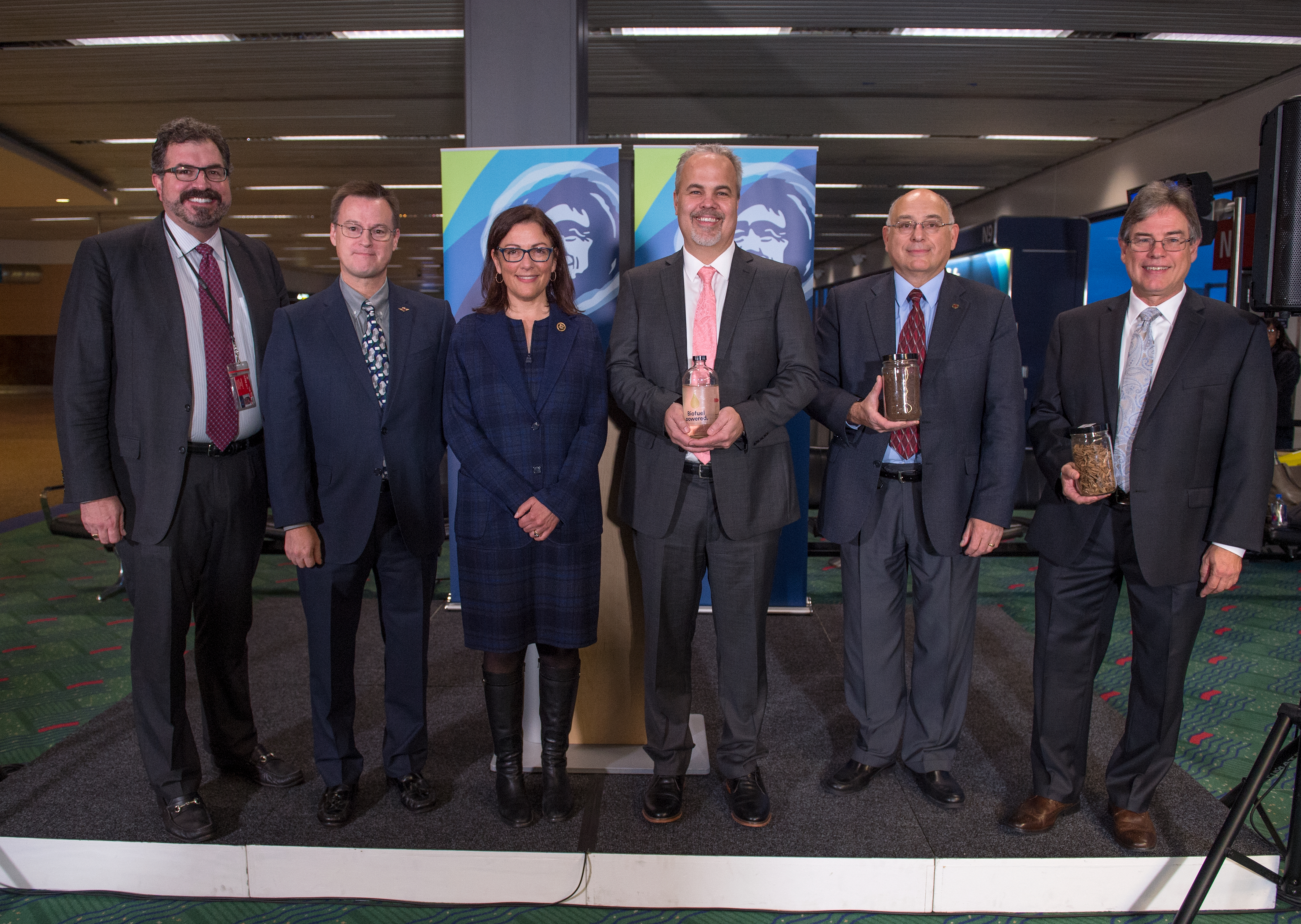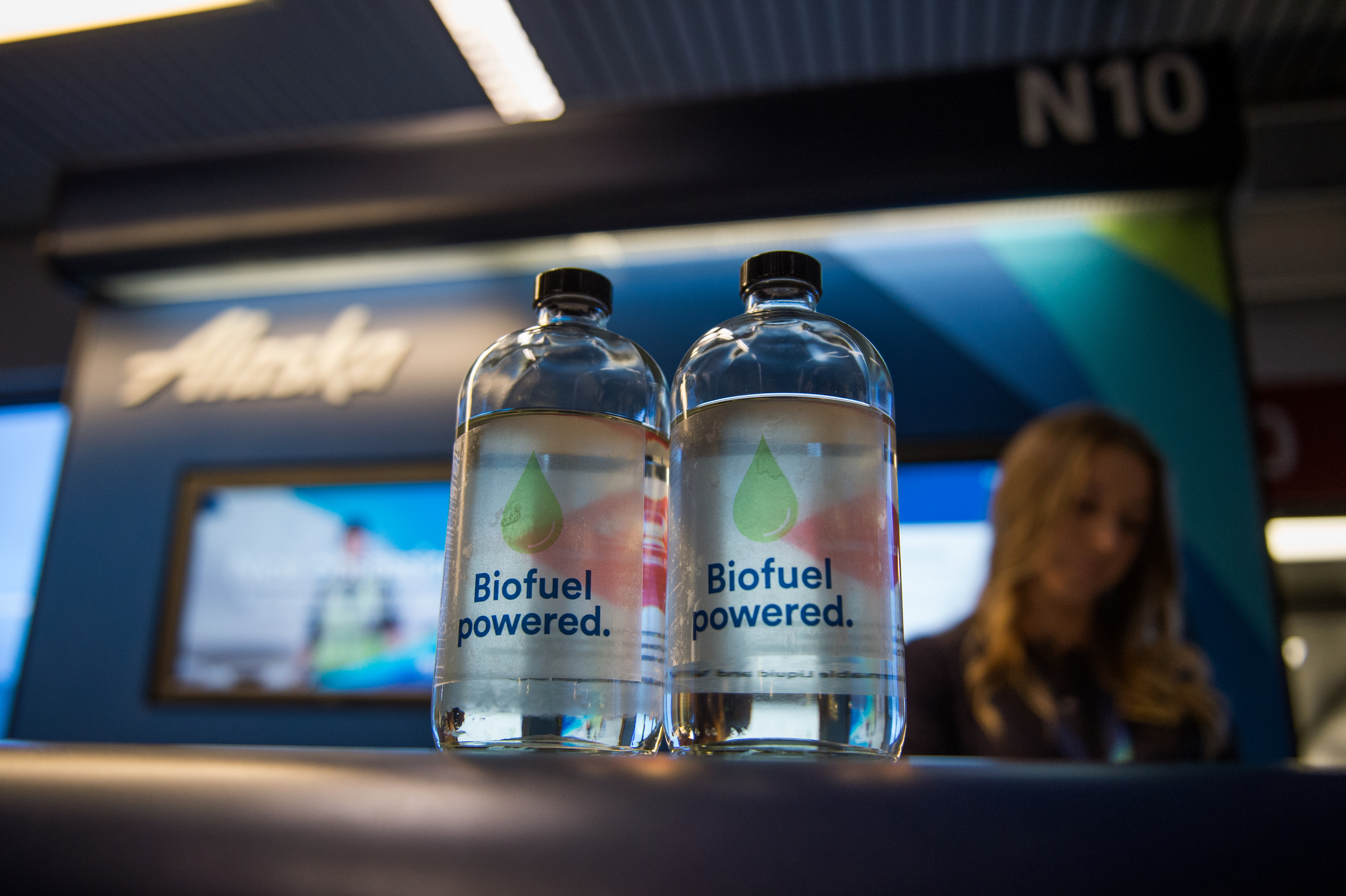Alaska Airlines flies first commercial flight with new biofuel made from forest residuals
Share

Alaska Airlines made history today flying the world’s first commercial flight using a new sustainable alternative jet fuel made from forest residuals from the Pacific Northwest – the limbs, stumps and branches that are left over after a timber harvest or forest thinning of managed forests on private land.
The flight departed this morning from Seattle-Tacoma International Airport to Reagan National Airport in Washington, D.C., powered by a 20 percent blend of the new, sustainable biofuel sourced directly from the Pacific Northwest.
The fuel for today’s flight was produced by the Northwest Advanced Renewables Alliance (NARA), led Washington State University. NARA is a five-year initiative that unites 32 member organizations from the academia, aviation, private industry, and the government, that came together under a USDA grant to demonstrate the viability of producing alternative jet fuel from forest residuals.
Gevo, Inc., a NARA partner, successfully adapted its patented technologies to convert cellulosic sugars derived from wood waste into renewable isobutanol, which was then further converted into Gevo’s Alcohol-to-Jet (ATJ) fuel. Believed to be the world’s first alternative jet fuel produced from wood, the fuel meets international ASTM standards, allowing it to be used safely for commercial flights.
While traditional forest practices leave some of the harvest materials behind to replenish soil nutrients and provide cover, the excess forest biomass is usually is piled and burned. The biofuel used in this flight was made from excess forest residuals collected from both sustainably managed forests owned by Weyerhaeuser (OR), the Muckleshoot Indian Tribe (WA), and the Confederated Salish Kootenai Tribes (MT), as well as rejected wood fibers from Cosmo Specialty Fibers (WA). Using forest residuals for biofuel feedstock is exciting because it does not compete with food production; air pollution is cut by reducing slash pile burning; removal of residuals prepares the forest floor for replanting; and the new industry of woody biomass collection and conversion helps create jobs in rural economies. Also, forest residuals are abundant and can be sustainably supplied from private lands.
Sustainable alternative jet fuels reduce greenhouse gas emission by 50-80 percent over the lifecycle of the fuel- from growth of the feedstock, transportation to a processing facility and production. The actual emission reduction depends on the type of feedstock used. Today’s flight will emit approximately 70 percent less CO2 than conventional petroleum jet, a win for the environment and Alaska Airlines alike.
Alaska Airlines flew two more flights in June using a blend of biofuel produced from the non-edible portion of sustainable corn.
Learn more about Alaska’s sustainability efforts at alaskaair.com/sustainability.



